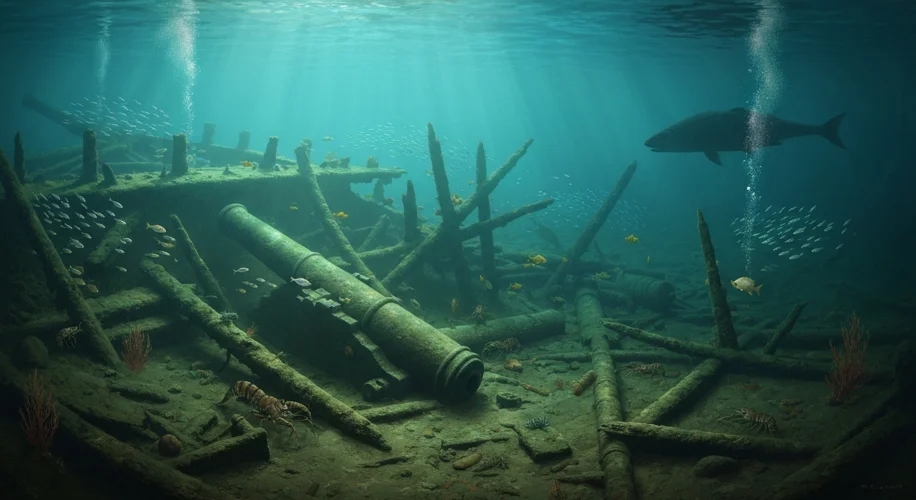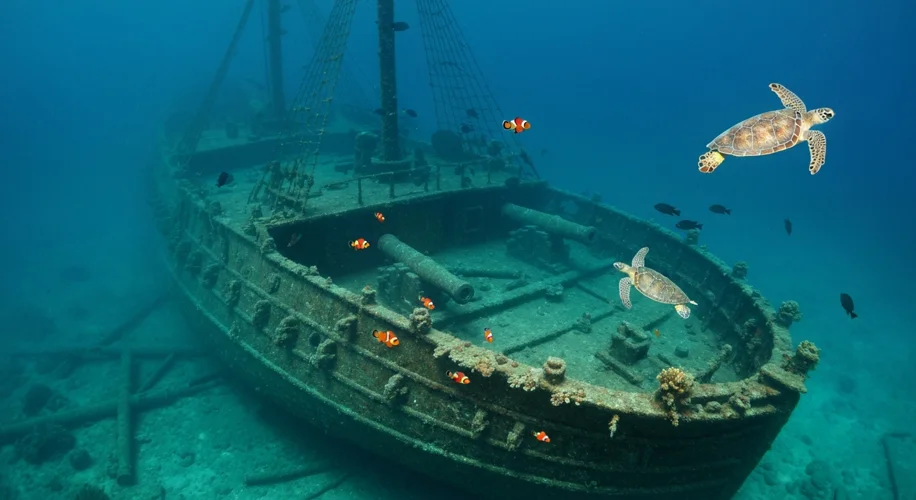The turquoise waters of the Great Barrier Reef hold secrets, not just of vibrant coral gardens and elusive marine life, but of a dramatic chapter in maritime history. For centuries, the wreck of HMS Pandora lay hidden, a silent testament to a desperate chase and a tragic end. In 1977, this secret began to unravel with the discovery of the Pandora, a vessel that sank in 1791 while hunting the infamous mutineers of the HMS Bounty. What followed has become Australia’s most scientifically excavated shipwreck, a site that continues to whisper tales of adventure, mutiny, and the harsh realities of naval life.
The year is 1791. The echoes of the Bounty mutiny, which had occurred two years prior, still resonated through the Royal Navy. Lieutenant Edward Edwards, a man tasked with restoring order and apprehending the mutineers, commanded HMS Pandora. His mission was not one of simple retrieval but of retribution and the reassertion of naval authority. Edwards had been given a daunting task: to scour the Pacific, locate the Bounty’s castaways, and bring them to justice. The Pandora, a 24-gunner, was built for speed and maneuverability, perfectly suited for chasing elusive vessels across vast, uncharted seas.
Edwards’s pursuit led him to the waters of Australia, specifically the treacherous reef systems off the coast of Queensland. He found not the Bounty, but thirteen of her crew, marooned and awaiting their fate. These were the loyalists who had been left behind by the mutineers, a stark reminder of the island paradise the Bounty crew had forsaken. The Pandora’s arrival was a beacon of hope for some, but for others, it signaled the beginning of the end. Edwards, driven by his duty and perhaps a desire for a swift resolution, did not hesitate to imprison the captured men in a makeshift brig built on the Pandora’s deck.
The storm that claimed the Pandora was as sudden as it was ferocious. On August 29, 1791, while navigating the unforgiving labyrinth of the Great Barrier Reef, the ship struck a coral outcrop. The damage was catastrophic. Water surged through the hull, and despite frantic efforts to save her, the Pandora began to sink. In the chaos that ensued, the imprisoned mutineers were largely forgotten. In the end, 31 men perished, swallowed by the unforgiving sea, while the remaining 101 survivors, including the captured mutineers, found themselves stranded on a nearby sand cay.
For over two centuries, the Pandora rested in obscurity, her timbers slowly succumbing to the marine environment. Then, in 1977, the discovery changed everything. The wreck, remarkably preserved in the shallow, warm waters, presented an unprecedented opportunity for archaeologists. What followed was not a mere salvage operation, but a meticulous, scientific excavation that has yielded an astonishing wealth of artifacts. These objects – from personal belongings and navigational tools to cannons and galley wares – have painted a vivid picture of life aboard an 18th-century warship.

The excavation of HMS Pandora has been a testament to modern archaeological techniques. Divers have painstakingly cataloged and recovered thousands of artifacts. These aren’t just historical curiosities; they are tangible links to the past. We see the intricate details of naval life – the officers’ fine china juxtaposed with the common sailors’ rough utensils, the formidable weaponry designed for battle, and the personal effects that speak to the humanity of those who sailed these seas. Each artifact, from a simple pewter button to a complex navigational instrument, tells a story.
The Pandora’s discovery has also shed new light on the infamous Bounty mutiny. The surviving mutineers, once brought to trial in Britain, were largely acquitted, their actions debated for centuries. However, the Pandora’s artifacts offer a more nuanced perspective. They reveal the harsh conditions, the strict discipline, and the psychological pressures faced by all sailors, loyalists and mutineers alike. The objects speak to the human cost of rebellion and the complex motivations that drove men to such drastic actions.
Moreover, the Pandora’s watery grave has become a treasure trove for understanding early European interactions with Australia. The ship was involved in charting and surveying parts of the coastline, and the artifacts found provide insights into the tools and methods used in these early expeditions. The sheer volume and diversity of recovered items make the Pandora a unique window into the maritime world of the late 18th century.
The ongoing work at the Pandora site continues to reveal new secrets. The preservation of the wreck is exceptional, allowing for detailed study of construction techniques and shipboard life. As technology advances, so too does our ability to analyze the site, promising even greater historical insights. The story of HMS Pandora is not just about a shipwreck; it is about the enduring human spirit, the quest for justice, and the profound lessons that lie buried beneath the waves, waiting to be discovered.

